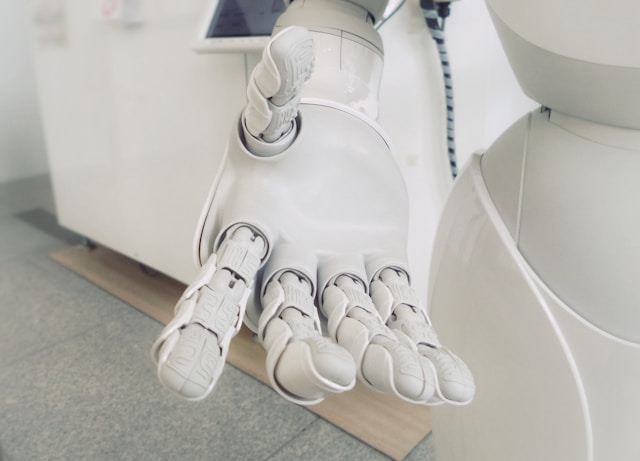
In today’s rapidly evolving technological landscape, artificial intelligence (AI) has become a cornerstone for businesses across industries. However, developing and deploying AI solutions requires more than just powerful algorithms, it demands a well-structured AI tech stack.
An AI tech stack refers to the combination of tools, frameworks, hardware, and infrastructure needed to develop, train, deploy, and manage AI applications. A well-designed AI stack ensures smooth workflows, enhances model performance, and supports scalability. Whether you’re building AI-driven chatbots, predictive analytics tools, or computer vision applications, having the right tech stack is essential for efficiency and success.
What is an AI Tech Stack?
An AI tech stack is the combination of hardware, software, frameworks, and tools used to build, train, deploy, and scale artificial intelligence applications. It serves as the backbone of AI systems, enabling efficient data processing, model development, and real-world application deployment.
How AI Stacks Differ from Traditional Software Stacks
Traditional software stacks are designed to run rule-based programs, where outputs are predictable and follow predefined logic (e.g., web applications, databases, and enterprise software). AI stacks, on the other hand, handle data-driven decision-making, requiring specialized infrastructure to train machine learning models, process vast amounts of data, and continuously improve through iteration.
The Growing Complexity of AI Development
AI technology is rapidly evolving, driven by emerging trends such as:
- Generative AI: AI models like ChatGPT and DALL·E can create text, images, and code, requiring massive computational power and optimized AI stacks.
Edge AI: AI models are moving closer to devices (e.g., autonomous vehicles, IoT sensors) to process data in real time, reducing cloud dependency. - AI-Driven Automation: Businesses are integrating AI for process automation, from customer service chatbots to AI-powered supply chain optimization.
>> Related Post: Top 5 Benefits of AI Agents for Business in 2025
Key Layers of an AI Tech Stack
A well-structured AI tech stack consists of multiple interconnected layers, each playing a critical role in AI development and deployment. Below, we explore these layers in detail with real-world relevance.
a) Data Layer – The Foundation of AI
At the heart of any AI system lies data, the fuel that powers machine learning models. AI applications rely on massive datasets for training and continuous learning.
Key Components of the Data Layer:
-
- Big Data: AI systems process vast amounts of structured and unstructured data (e.g., text, images, videos, sensor data).
- Data Lakes vs. Data Warehouses:
-
- Data lakes store raw, unstructured data for AI training.
- Data warehouses store structured, processed data for analysis.
- Training Datasets: High-quality datasets improve AI accuracy. Examples: OpenAI’s GPT models use massive text datasets, while Hugging Face provides pre-trained models for NLP.
b) AI Infrastructure – Compute Power & Storage
AI applications demand high-performance computing to train and run models efficiently. The choice between cloud-based or on-premise AI infrastructure significantly impacts cost, scalability, and security.
Key AI Infrastructure Options:
- Cloud-Based AI Infrastructure: AWS (Amazon SageMaker), Google Cloud AI, Microsoft Azure AI.
- On-Premise AI Servers: Used for data-sensitive industries (e.g., finance, healthcare).
- Hybrid AI Solutions: Combining on-premise control with cloud scalability.
Compute Power – GPUs, TPUs & AI Chips
- GPUs (Graphics Processing Units): High-performance chips used for AI training (e.g., NVIDIA’s AI GPUs).
- TPUs (Tensor Processing Units): Specialized processors designed by Google for deep learning.
- Custom AI Chips: Apple, Tesla, and Google design custom AI processors for optimized performance.
c) Machine Learning Frameworks & Libraries
Machine learning frameworks provide the tools needed to build, train, and optimize AI models.
Popular AI Frameworks & Their Use Cases
- TensorFlow: TensorFlow is best for deep learning and NLP. It provides scalable solutions and is usually adopted in enterprise AI.
- PyTorch: PyTorch is best for research and prototyping. It is flexible and provides strong community support.
- Keras: Keras is best for quick AI prototyping. It provides user-friendly functions for developers, abstracting complex operations.
- Scikit-Learn: Scikit-Learn is a powerful library for traditional machine learning tasks such as regression and clustering, offering efficient performance for small-to-medium-sized datasets.
d) AI Model Development & MLOps
Once AI models are built, they must be trained, tested, and deployed in a structured manner. MLOps (Machine Learning Operations) helps automate and manage this process.
Key Components of AI Model Development
- Model Training: Using labeled datasets to teach AI models.
- Model Validation: Testing AI performance before deployment.
- Deployment: Deploying AI models to cloud or edge environments.
e) APIs & AI Integration Tools
AI models don’t operate in isolation, they must integrate seamlessly into business applications. APIs (Application Programming Interfaces) allow developers to integrate AI capabilities without building models from scratch.
Here are some popular AI APIs and their functions:
- OpenAI GPT API: Used for natural language processing (NLP) applications such as chatbots, enabling AI-powered customer support and conversational agents.
- Google Vision API: Specializes in image recognition, making it useful for tasks like scanning and analyzing documents, identifying objects, and extracting text from images.
- IBM Watson AI: Provides AI-driven analytics to help businesses gain insights, automate processes, and enhance decision-making.
>> Related Post: Hire Remote AI Chatbot Developers for BioTech/Pharma: Uses, Benefits & Cost [2025]
Step-by-Step Guide to Building an AI Tech Stack in 2025:
Step 1: Define Your Goals and Use Cases
Before selecting tools or frameworks, clearly defining your AI solution’s purpose is essential. This ensures that your AI stack is tailored to your specific needs rather than being an over-engineered or underutilized system.
Identify the AI problem you’re solving:
- Predictive analytics (e.g., demand forecasting in retail, fraud detection in banking).
- Natural Language Processing (NLP) (e.g., chatbots, sentiment analysis, AI-powered transcription).
- Computer vision (e.g., facial recognition, medical imaging).
Align AI development with business goals:
- How will AI improve efficiency, decision-making, or customer experience?
- What ROI (Return on Investment) do you expect from AI implementation?
Consider industry-specific requirements:
- Fintech: AI security, fraud detection, and regulatory compliance.
- Healthcare: HIPAA-compliant AI models for medical imaging and patient data privacy.
- E-commerce: AI-powered recommendation engines and personalized marketing.
Step 2: Budget and Resource Allocation
Building an AI tech stack requires careful budget planning to allocate resources effectively across hardware, software, and talent.
1. Hardware Considerations
The right computing infrastructure is crucial for training AI models.
- On-premise servers: Ideal for organizations needing full control over data security.
- Cloud computing (AWS, Google Cloud, Azure): Cost-effective, scalable, and easy to integrate.
- GPUs vs. TPUs:
- GPUs (Graphics Processing Units): Suitable for deep learning workloads.
- TPUs (Tensor Processing Units): Optimized for Google’s AI workloads, offering high efficiency.
2. Software & AI Development Tools
- Licenses for AI frameworks (e.g., TensorFlow, PyTorch, Keras).
- MLOps tools for model versioning, deployment, and monitoring (e.g., MLflow, Kubeflow).
3. Talent Acquisition & Training
- Hiring AI experts (data scientists, ML engineers, DevOps specialists).
- Upskilling existing employees through AI training programs.
Cost-effective strategies:
- Start with open-source frameworks to reduce software costs.
- Use cloud-based services for pay-as-you-go pricing models.
- Leverage pre-trained AI models instead of building from scratch.
Step 3: Selecting the Right Tools and Technologies
With clear objectives and budget planning in place, the next step is choosing the best AI tools and technologies.
1. AI Frameworks (Core of AI Development)
- TensorFlow is best for deep learning and natural language processing (NLP) applications. It is highly scalable and supports deployment across multiple platforms.
- PyTorch is ideal for research and prototyping. It offers flexibility and is widely used in academic and research communities.
- Keras is excellent for quick prototyping. It provides a high-level API and is easy to use, making it a great choice for beginners and rapid development.
2. Development Tools & Platforms
- IDEs (Integrated Development Environments): Jupyter Notebook, PyCharm.
- AutoML tools: Google AutoML, H2O.ai (for automating AI model development).
- No-Code AI platforms: DataRobot, MonkeyLearn (ideal for non-technical users).
3. Deployment Infrastructure
- Cloud AI platforms: AWS SageMaker, Google AI Platform, Azure Machine Learning.
- Hybrid cloud & on-prem solutions: Best for industries needing strict security compliance.
- Edge AI: Deploying models on edge devices (e.g., self-driving cars, IoT devices).
Step 4: Integration and Scalability Considerations
AI systems should be easily integrated into existing infrastructure while remaining scalable for future growth.
1. Smooth Integration
- Use standardized APIs for compatibility across platforms.
- Adopt containerization (Docker, Kubernetes) for seamless deployment.
2. Modular Design for Future Upgrades
- Build AI solutions with a microservices architecture to allow independent updates.
- Choose interoperable frameworks to prevent vendor lock-in.
3. Scalability Planning
- Can the AI stack handle growing datasets and workloads?
- Use serverless computing (AWS Lambda, Google Cloud Functions) for dynamic scalability.
Step 5: Testing, Optimization & Continuous Improvement
To ensure your AI stack delivers optimal performance, continuous testing and refinement are crucial.
1. Performance Testing
- Measure the speed, accuracy, and latency of AI models.
- Benchmarking tools like MLPerf can be used for AI performance evaluation.
2. Scalability Testing
- Simulate large workloads to ensure system reliability under heavy usage.
3. User Feedback & Iteration
- Collect real-world feedback and refine AI models accordingly.
4. Continuous AI Model Training
- Automate retraining pipelines to keep AI systems up-to-date.
- Monitor model drift to detect when AI predictions become less accurate over time.
>> Related Post: 10 Ways AI Can Improve Your Social Media Strategy
Challenges and Emerging Trends in AI Tech Stacks
1. Data Challenges: Quality, Bias, and Privacy
Data is the backbone of any AI system, but poor-quality data can lead to unreliable AI models. Organizations struggle with:
- AI models require vast amounts of structured and unstructured data, but missing values and formatting inconsistencies reduce accuracy.
- If training data reflects societal biases, AI models can reinforce discrimination. For example, AI-powered hiring tools have faced criticism for favoring certain demographics.
- Regulations like GDPR, CCPA, and HIPAA impose strict guidelines on data collection and processing. Organizations must ensure compliance to avoid legal penalties.
2. High Infrastructure and Computing Costs
AI development is computationally expensive, requiring powerful hardware and scalable infrastructure.
- AI training demands high-performance processors like NVIDIA A100 GPUs or Google TPUs, which are costly.
- Cloud providers like AWS, Azure, and Google Cloud offer flexibility, but long-term usage can be expensive compared to on-premise AI setups.
- Training large AI models (like GPT-4) requires enormous energy, raising sustainability concerns.
3. Model Scalability and Deployment Issues
AI solutions that work in development may fail at scale.
- AI models trained on small datasets may struggle when exposed to real-world, high-volume data.
- Running AI on edge devices (e.g., IoT sensors, smartphones) requires lightweight models due to limited computing power.
- Applications like autonomous vehicles and fraud detection require low-latency inference, which is difficult to achieve with traditional AI architectures.
4. Shortage of AI Talent and Expertise
The demand for AI professionals far exceeds the supply, creating hiring challenges:
- AI engineers, data scientists, and MLOps specialists are expensive and in high demand.
- Many organizations struggle to integrate AI due to a shortage of in-house expertise.
- Training existing employees in AI takes time and investment.
5. Security Risks and Ethical Concerns
AI systems are vulnerable to cyber threats and ethical dilemmas:
- Attackers can manipulate AI models through adversarial attacks, making them misclassify inputs.
- AI-generated deepfakes are increasingly used for fraud, misinformation, and identity theft.
- Many AI models, particularly deep learning systems, function as black boxes, making it difficult to interpret their decisions.
AI & ML Services Offered by DataDoers:
At DataDoers, we specialize in delivering innovative AI solutions:
- AI Chatbot Development Services/AI Assistant
- Computer Vision Development & Consulting Services
- Agentic AI Consulting Services
>> Related Post: AI in Digital Marketing: Use Cases, Examples & Pros/Cons [2025]
Conclusion
Building an effective AI tech stack is crucial for businesses looking to leverage artificial intelligence in 2025. With AI development becoming more complex, selecting the right combination of hardware, frameworks, tools, and infrastructure can significantly impact scalability, performance, and compliance. A well-structured AI tech stack ensures smooth data processing, efficient model training, and seamless deployment, whether for predictive analytics, NLP, or computer vision applications.
Organizations can build a future-proof AI stack that drives innovation and long-term success by carefully assessing their goals, budget, and scalability needs.
FAQs
1. What AI tech stack works best for small businesses?
Small businesses can leverage open-source machine learning tools like Scikit-learn or TensorFlow for affordability and adaptability. Cloud-based platforms such as AWS and Google Cloud offer scalable, pay-as-you-go options, making AI implementation more cost-effective. Additionally, pre-trained models from platforms like Hugging Face help minimize development time and expenses.
2. Does MLOps enhance the performance of an AI tech stack?
MLOps frameworks like Kubeflow and MLflow help streamline AI operations by automating deployment, tracking model performance, and maintaining version control for models and datasets. This leads to smoother updates, greater efficiency, and improved reliability in AI applications.
3. Can AI be implemented without coding knowledge?
Yes, no-code AI platforms like DataRobot and Google AutoML allow users to create and deploy AI models without programming skills. These tools offer intuitive drag-and-drop interfaces and ready-to-use models, making AI accessible for businesses and individuals with no technical background.




